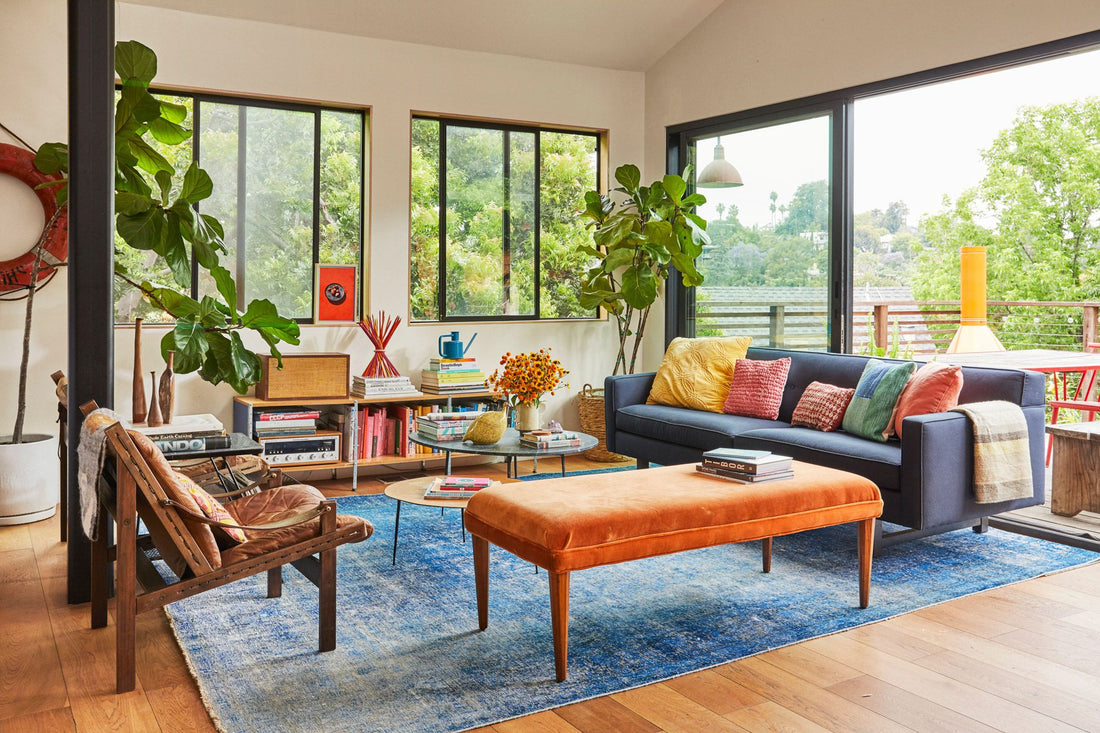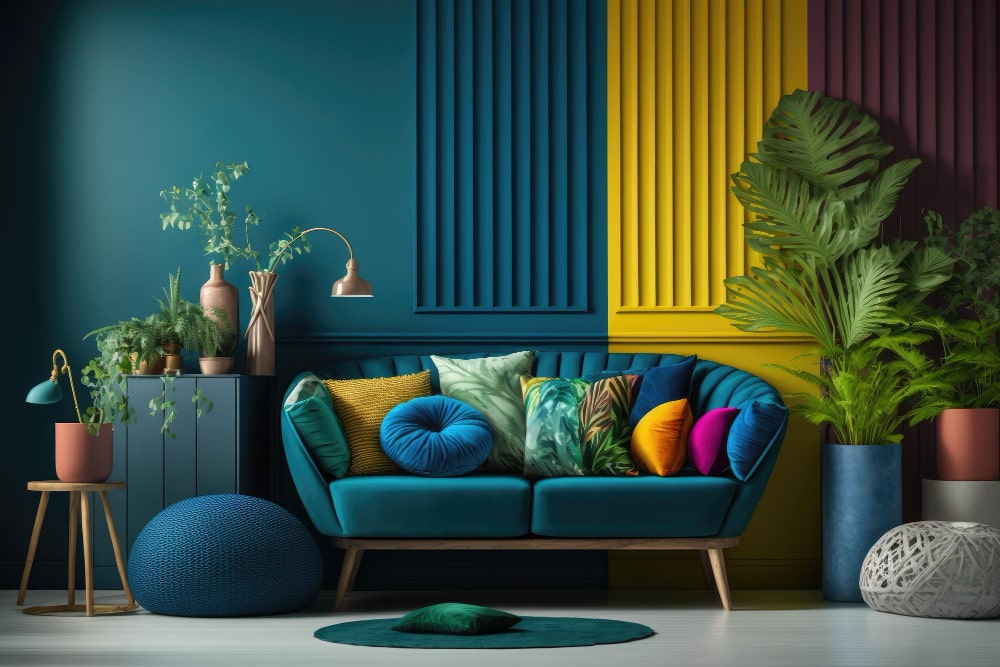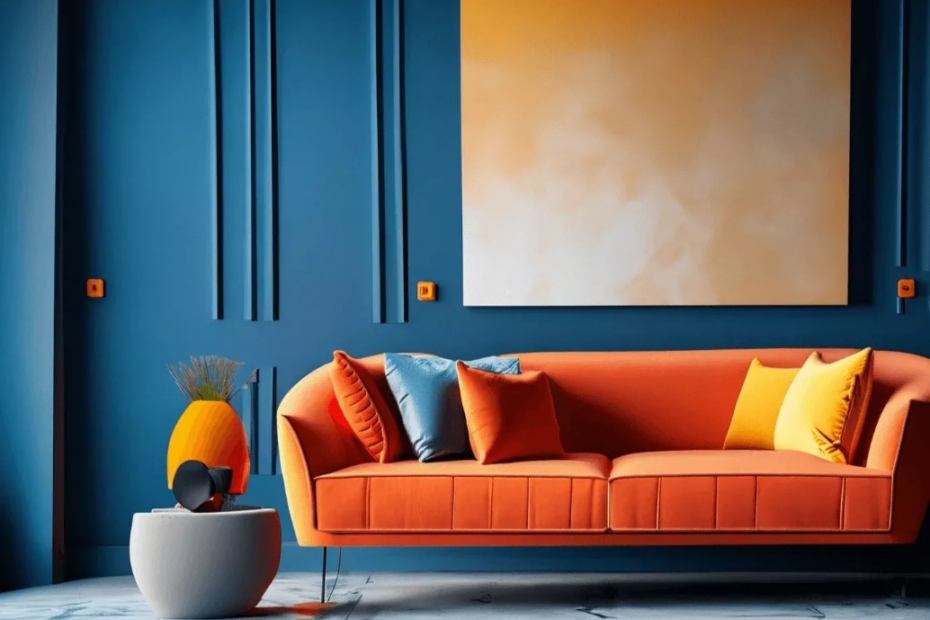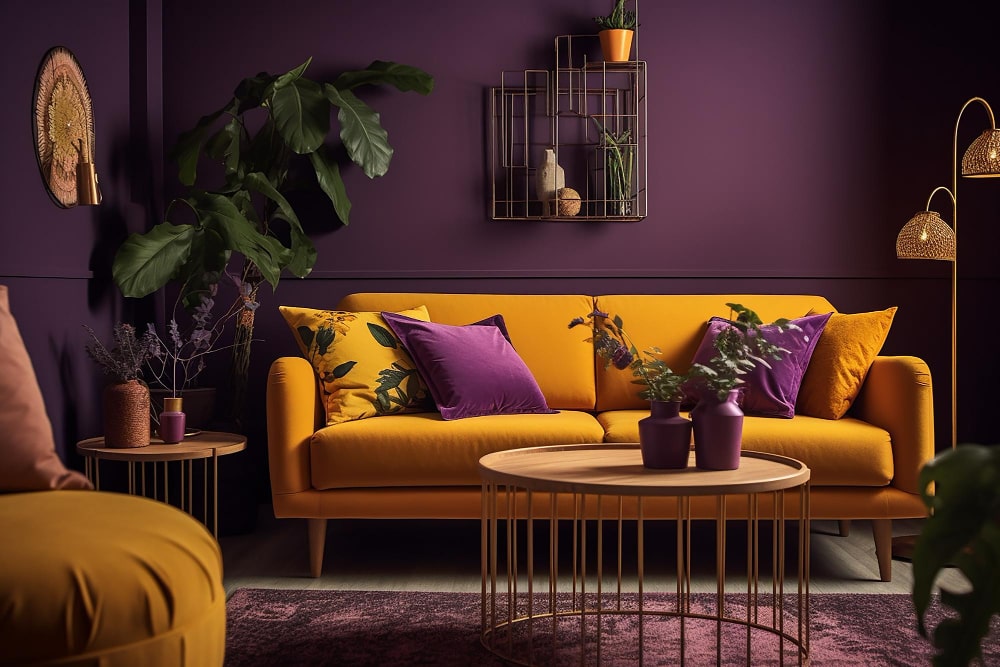
Color Psychology in Home Decor: Choosing the Right Palette
Share
Color plays a critical role in our lives - it can influence our mood, perception, and behavior. This makes choosing the right color palette for your home decor an important task. Whether you are looking to create a peaceful and serene environment or a vibrant and energetic space, understanding the psychology behind colors can help you achieve your desired outcome.
In this guide, we will delve into the world of color psychology and how it relates to home decor. We will explore different color palettes and their effects on emotions and behaviors. You will also learn about various techniques to incorporate these colors into your home decor seamlessly. By the end of this article, you will have a better understanding of how to use colors to create a harmonious and inviting living space.
What Is Color Psychology?
Color psychology is the study of how colors can affect human behavior and emotions. It is a branch of psychology that explores the impact of colors on our brain and how it can influence our thoughts, feelings, and actions.
Colors are not just visually pleasing; they also have subconscious associations that can evoke certain emotions and reactions in us. For example, warm colors like red, orange, and yellow are often associated with energy, passion, and warmth while cool colors like blue and green are linked to calmness, relaxation, and tranquility.
Understanding color psychology is crucial when it comes to home decor as the right color palette can enhance the mood and atmosphere of a room. Also, certain colors may work better in certain areas of the house depending on their effects.
Why Color Psychology Matters in Home Decor?

The color scheme of your home has a significant impact on the overall ambiance and aesthetics. It can make or break the look and feel of a room.
Using colors that complement each other and align with the purpose of the room can create a cohesive and inviting space. On the other hand, clashing colors or inappropriate use of colors can result in an unappealing and uncomfortable environment.
Furthermore, colors can also affect our behavior. For example, cool colors like blue and green have been found to promote relaxation and calmness, making them great choices for bedrooms or areas where you want to unwind. Warm colors like yellow and red, on the other hand, can increase energy levels and stimulate appetite, making them suitable for dining rooms or kitchens.
How to Incorporate Color Psychology in Home Decor?

Now that we understand the importance of color psychology in home decor let's explore some practical ways to incorporate it into your living space.
- Start with a neutral base: Begin by choosing a neutral color as the base for your home decor, such as white, beige, or grey. Neutral colors provide a blank canvas for you to add pops of color without overwhelming the space. They also create a clean and modern look.
- Choose a color scheme: Decide on a color scheme for each room based on its purpose and the emotions you want to evoke. For example, blue and green work well in bedrooms, while yellow and orange are great for kitchens.
- Use accent colors: Once you have chosen your base color and overall color scheme, add pops of accent colors through accessories like throw pillows, rugs, or artwork. These smaller accents can bring life to a room without being too overpowering.
- Consider the lighting: Keep in mind that natural light can affect how we perceive colors. In rooms with plenty of natural light, cool colors may appear brighter, while warm colors may look more muted. Consider this when choosing your color palette.
- Think about the finish: The finish of a color can also impact its psychological effects. Glossy finishes tend to be more stimulating and energetic, while matte finishes create a calmer and more subdued atmosphere.
Choosing the Right Color Palette for Your Home
:strip_icc()/bright-colorful-living-room-windows-plants-2hC9mXcR4G48aaah7cQ9qq-372d8cbc70ce4e2e81f9fca97a4f8f03.jpg)
Now that we have a basic understanding of color psychology, let's look at different color palettes and how they can be used in home decor. Here are some popular color schemes to consider:
Neutral Colors
Neutral colors such as whites, creams, grays, and beiges are often seen as timeless and versatile. They provide a serene and sophisticated backdrop that allows other decor elements to stand out.
Neutrals can work in virtually any room and serve as a perfect canvas for adding pops of color or textured decor. In living rooms and bedrooms, neutral tones evoke a sense of calm and relaxation, making them ideal choices for creating peaceful environments.
When used wisely, neutral colors can enhance the overall spaciousness and light within your home, making it feel more open and inviting.
Warm Colors
Warm colors, including reds, oranges, and yellows, bring a sense of energy and warmth to any room. These hues are perfect for spaces where you want to encourage conversation and interaction, making them ideal for living rooms and dining areas.
Warm colors can create a cozy and inviting atmosphere, which is particularly welcome in colder climates. However, because these colors can be intense, it is important to balance them with neutral tones or use them as accent colors to avoid overwhelming the space. Strategic use of warm colors can invigorate your home decor beautifully.
Cool Colors
Cool colors such as blues, greens, and purples are often used to create tranquil and soothing environments. These hues are perfect for bedrooms and bathrooms, where relaxation is the primary goal.
Blue is known for its calming qualities and is often associated with serenity and peace, while green evokes nature and balance. Purple, with its historic ties to royalty, can add a touch of luxury and calmness.
These colors can mentally transport you to peaceful, natural settings, encouraging relaxation and rest. Incorporating cool colors into your home can help foster a serene and harmonious ambiance.
Earthy Tones
Earthy tones, featuring shades of brown, green, and rust, connect a space with nature, instilling a grounded and organic feel.
These colors are perfect for homes that aim to create a warm and welcoming ambiance. Earthy tones exude warmth and durability, making them ideal for communal spaces like kitchens and family rooms where people gather.
They pair well with natural materials such as wood, stone, and leather, enhancing the organic atmosphere. Use earthy shades to impart a sense of stability and comfort in your decor, reflecting the calming effect of a nature-inspired palette.
Monochromatic Colors
A monochromatic color scheme involves using different shades, tones, and tints of a single color. This approach creates a cohesive and harmonious look that can be both elegant and visually soothing.
A monochromatic palette is ideal for setting a clean and modern aesthetic, as it's less visually overwhelming and more cohesive. In any room, using varied textures and materials within the same color family adds depth and interest.
Monochromatic schemes work wonderfully in minimalist spaces, where simplicity is key. When done right, they can enhance the architecture and design, letting unique structures stand out beautifully.
Complementary Colors
Complementary colors are pairs found opposite each other on the color wheel, such as blue and orange or red and green. When used together, these colors create high contrast and bring energy to a room.
This scheme is perfect for spaces like playrooms or home offices where vibrancy and focus are needed.
The key to using complementary colors is balance; one color should dominate while the other serves as an accent. This balance prevents an overwhelming visual clash and creates a dynamic yet harmonious space. Incorporate complementary colors as attention-grabbing accents for a lively decor.
So these are some popular color schemes that can help you decide on a color palette for your home. Remember to also consider personal preferences and the function of each room when choosing your colors.
Can A Color Scheme Change The Entire Mood Of A Room?

In short, yes! As we've seen, different colors can evoke various emotions and have a profound impact on our mood and well-being.
For example, bright and saturated hues can stimulate energy and bring excitement to a room, while muted tones can create a sense of calmness. Cool colors can help us relax, while warm tones encourage interaction and conversation.
Additionally, the way colors are used together also affects the overall mood of a space. Harmonious color combinations create balance and cohesion, while clashing colors can create visual tension.
So when choosing a color scheme for your home, consider not just individual colors but how they work together to evoke certain emotions and set the mood of a room. With careful consideration, you can use color to create a home that reflects your personality and promotes positive feelings.
Tips for Choosing a Color Scheme

There are a few things to keep in mind when selecting a color scheme for your home:
- Consider the function of each room: Decide on colors based on what you want the room to feel like. Calming colors for bedrooms, energetic hues for playrooms, and warm tones for social spaces.
- Think about the overall flow: Consider how each room connects to one another and choose colors that complement each other, creating a cohesive look throughout your home.
- Use neutrals as a base: As mentioned earlier, neutral tones work well as a backdrop for adding pops of color or texture. Start with neutrals and build from there.
- Don't be afraid to experiment: Have fun with color and don't limit yourself to traditional color schemes. Use complementary colors or mix warm and cool tones for a unique look.
- Consider the lighting in each room: Natural and artificial light can affect the way colors appear. Test out colors in different lighting conditions before committing to a color scheme.
By keeping these tips in mind, you can confidently choose a color scheme that reflects your style and creates the desired mood for each room in your home. So go ahead and let your favorite colors guide you in creating a beautiful and harmonious living space!
Choose Bari Decor For A Perfect Color Palette
At Bari Decor, we're dedicated to infusing your home with European design and quality. Our curated door, fireplace, and lighting collections are handpicked from top European manufacturers, ensuring every piece is both functional and beautiful.
Our Bari Lighting Selections provide a diverse array of modern lighting options to enhance any space. Whether you seek sleek minimalism or bold statement pieces, our collection caters to every style and taste.
We take pride in our European Imported Doors crafted with precision. These doors not only elevate the visual elegance of your home but also offer durability and functionality.
To add warmth and ambiance to your living space, explore our Modern Electric Fireplaces. With various sizes and styles, you'll find the perfect fireplace to complement your decor.
Contact us today to discover how Bari Decor can help you achieve a harmonious color palette and a stylish, functional home.
FAQs
How does interior design color psychology influence well-being in home decor?
Interior design color psychology plays a significant role in enhancing well-being by creating environments that evoke specific emotions and moods. By carefully selecting a color palette, interior designers can craft spaces that promote relaxation or energy, depending on the desired outcome. Harmonious and soothing combinations are essential to ensure a balanced atmosphere, aligning both with your personal preferences and the psychological impact of colors.
What role do accent colors play in psychology in interior design?
Accent colors are crucial in psychology in interior design as they provide contrast and focus within a space. These colors can draw attention to particular areas or elements, adding depth and interest. When chosen thoughtfully, accent colors can complement the main color palette, contributing to a room's harmonious and soothing combinations while reflecting both your personal preferences and the principles of interior design color psychology.
How can color psychology in interior design enhance both your personal preferences and space functionality?
Color psychology in interior design allows you to tailor your home decor to reflect both your personal preferences and improve the functionality of a space. By understanding the psychological effects of different colors, you can select hues that resonate with your individual taste and serve the intended purpose of each room. This approach ensures that your living environment not only looks appealing but also supports your overall well-being through harmonious and soothing combinations.
Why is consulting interior designers important when choosing a color palette based on color psychology in interior?
Consulting interior designers is invaluable when selecting a color palette based on color psychology in interior spaces. Their expertise helps in creating a balanced and cohesive look that aligns with both your personal preferences and the psychological effects of colors. Interior designers can guide you in choosing harmonious and soothing combinations, incorporating accent colors strategically to enhance the overall mood and functionality of your home.
Conclusion
Choosing the right color scheme for your home can make all the difference in creating a beautiful and harmonious space.
From monochromatic to complementary colors, each palette has its unique effects on mood and design. Remember to consider the function of each room, overall flow, and lighting when selecting colors.
And don't be afraid to experiment with different shades and tones to create a personalized look. With Bari Decor's curated collections of doors, lighting, and fireplaces, you can easily achieve a European-inspired home with a perfect color palette. So start exploring our selections today!

